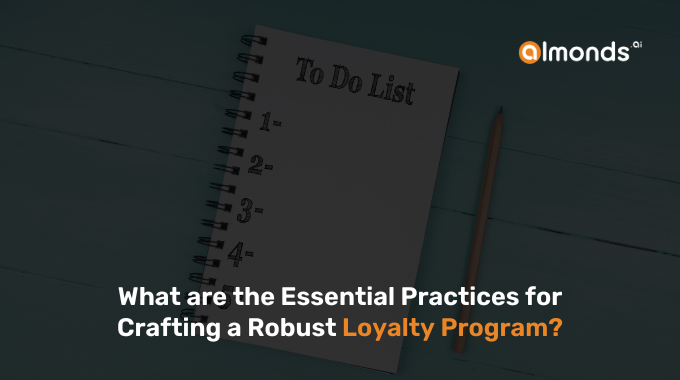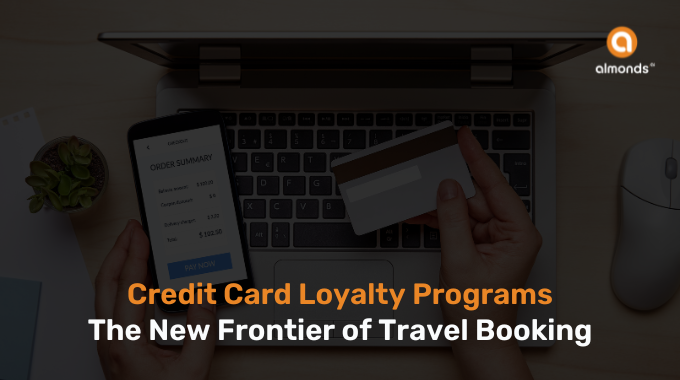In today’s competitive market, a well-structured loyalty program is vital for cultivating enduring customer relationships and driving business growth. So, brands should focus on designing a loyalty program that not only meets but elevates customer expectations, enhancing brand loyalty and ensuring a significant impact on your business’s success.
This article guides you through the creation of an effective loyalty program. Here, we’ll delve into best practices for program structuring, channel partner engagement, and rewards systems, all tailored to resonate with your target audience.
The Blueprint of Success: Crafting Your Loyalty Program Concept
The genesis of an effective loyalty program lies in its foundational blueprint. It’s this framework that dictates the program’s aesthetic and operational essence. A well-conceived concept not only eases the path of implementation but also minimizes the need for post-launch adjustments, thereby shortening the integration period with loyalty software providers.
Step 1: Tailoring the Program to Your Marketing Strategy
Before diving into the alluring world of rewards and gamification, it’s crucial to establish the program’s skeleton. This involves:
- Segmentation: Pinpointing your target customers, understanding their spending behaviors, and identifying the channels for program integration are foundational. Should your strategy pivot towards mobile users, consider a dedicated loyalty app to enhance engagement.
- Geographic Reach: Decide where your program will take root geographically. It encompasses not only the countries and languages but also the currencies your program will support.
- Key Performance Indicators (KPIs): Determine which business areas your loyalty program will serve. Set clear communication KPIs for improvement and consider the vanity KPIs that could elevate your brand’s stature in the market.
Step 2: Mapping the Member’s Journey from Start to Finish
A loyalty program is a saga of multiple customer journeys, each critical from the point of gamification to the final in-store experience. Prioritize the enrollment and opt-out processes to ensure a positive, lasting impression.
- Enrollment: Outline a straightforward registration process that collects essential customer information efficiently. Ensure that this process is accessible, whether it’s online or in physical stores, to accommodate all customer preferences.
- Opt-out: Develop a dignified and hassle-free exit process for members choosing to leave the program. A positive parting experience is just as important as a warm welcome.
Step 3: Comprehensive Customer Interaction within Your Loyalty Program
Your loyalty program features are its backbone. But remember, flexibility is key, best practices evolve, and so should your program. A willingness to adapt and incorporate new ideas will ensure your program remains relevant and engaging.
Program Structure: The Framework of Engagement
- Decide on the loyalty program type that best matches your brand ethos and customer expectations.
- Choose a resonant name for your program that echoes your brand’s values and the rewards it offers.
- Define your loyalty currency or points system, ensuring it’s easy to understand and valuable to your customers.
- If tiers are part of your program, determine how many you’ll have and the criteria for progression, making the journey rewarding at every level.
- Identify the transactions that will accrue benefits, ensuring they align with your business objectives.
Interactivity: Elevating Customer Engagement
- Consider implementing limited-time campaigns or special holiday offers to create buzz and keep the program dynamic.
- Determine which non-transactional behaviors, such as social shares or feedback submission, will earn rewards.
- Integrate gamification to make the program more interactive and fun, encouraging deeper engagement.
- Plan for social media contests that not only engage but also amplify your reach through user-generated content.
Step 4: The Art of Rewarding Loyalty
Rewards are tangible expressions of appreciation for customer loyalty. They should be carefully crafted to align with customer desires and enhance perceived value.
Crafting Rewards: The Tangible Tokens of Appreciation
- Decide on the rewards your program will offer. Will they include exclusive services, products, or experiences?
- Ensure the rewards are not just one-offs but have the potential for multiple redemptions, keeping customers engaged over time.
- Set clear criteria for reward eligibility to maintain program integrity and customer clarity.
- Offer permanent benefits that cement long-term loyalty and enhance the perceived value of your program.
Benefits and Privileges: Beyond the Transaction
- Establish criteria for accessing special benefits, balancing exclusivity with attainability.
- Decide if benefits will be ongoing or require periodic renewal to maintain interest and engagement.
- Introduce VIP clubs or tiers to reward top-tier customers, adding a layer of prestige to your program.
VIP Treatment: Crafting Exclusive Experiences
- Define the entry requirements for VIP status, ensuring they are aspirational yet achievable.
- Detail the perks VIP members will enjoy, such as early access to sales, exclusive events, or dedicated support.
Step 5: The Imperative of Data Collection in Loyalty Programs
As you craft the various stages of your loyalty program, do not lose sight of one critical component: data collection. The data gathered from your program is a goldmine of insights, driving strategic decisions and program refinements.
Data Strategy: Measuring for Success
- In the planning phase, it’s essential to decide on the types of data you will collect. This might include customer purchase history, engagement rates, reward redemption patterns, and overall program interaction.
- Integrate a reporting service that aligns with your data objectives. Whether it’s an in-house dashboard or a third-party analytics service, ensure it can handle the depth and breadth of data you require.
In conclusion, the success of a loyalty program hinges on its ability to engage and resonate with its target audience. By carefully planning the program’s structure, integrating engaging elements, and offering meaningful rewards, you create a pathway to deeper customer connections. Implementing a robust data analysis strategy is crucial for tracking effectiveness and making informed adjustments.






